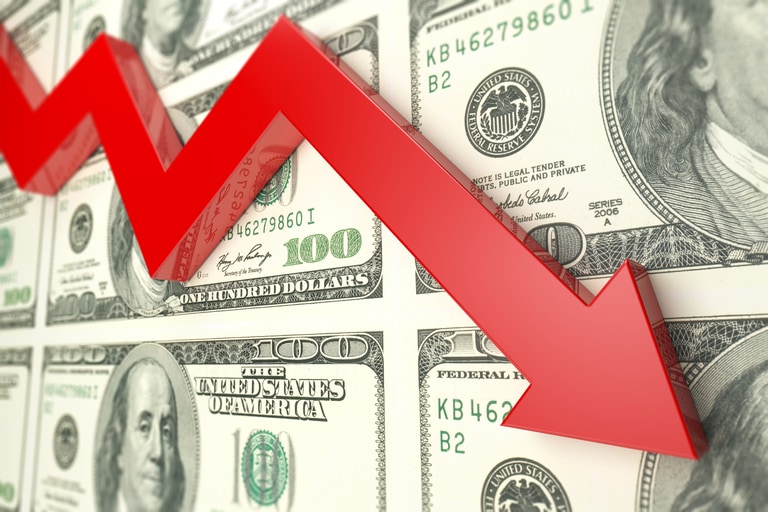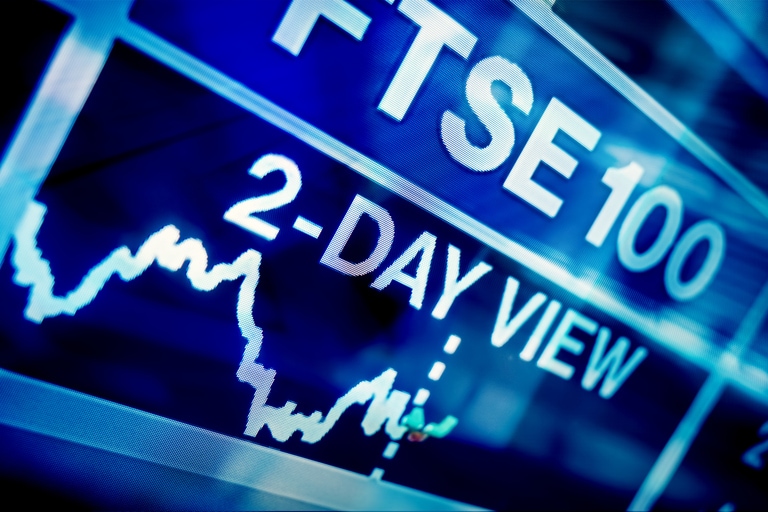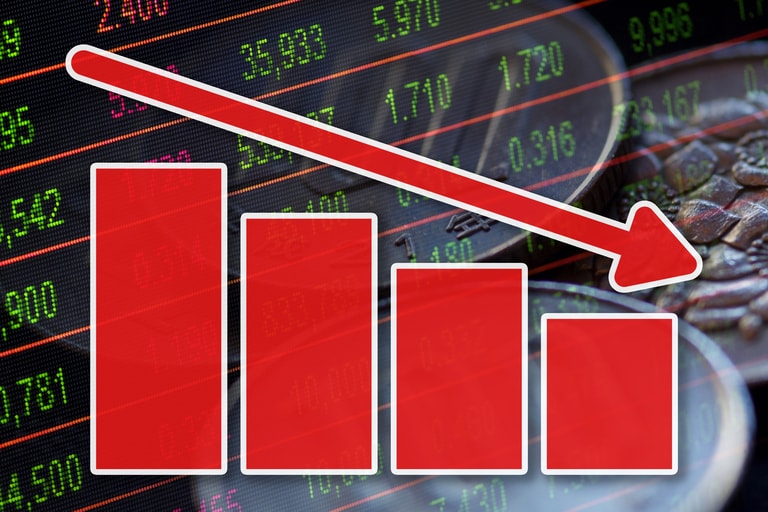As expected the Federal Reserve raised rates by 75bps pushing the Fed funds rate up to 3% to 3.25%, pushing the US dollar to a new 20 year high, and sending the 2-year yield above 4% for the first time since 2007.
The Fed also set out new projections for the benchmark rate raising the average to 4.4% by the end of this year, up to 4.6% in 2023, before falling to 3.9% in 2024.
Fed chair Jay Powell went on to reiterate that the FOMC were “strongly committed” to driving inflation lower while signalling that more rate rises are on the way. Powell went on to say that there was no painless way to drive inflation lower, with the prospect that we could well see another 100bps by the end of this year at the bare minimum.
Not surprisingly US equity markets did not like the hawkish tone, as well as the prospect of lower growth and higher inflation, with the Fed altering its guidance on both. US GDP is expected to slow to 0.2% in 2022, with Powell admitting that a recession might be possible. Core inflation is forecast to decline to 4.5% this year, before falling to 2.1% by 2025.
US markets finally finished the day lower after see-sawing in the aftermath of yesterday’s decision, while the continued rise in the US dollar has served to present a huge problem for the likes of the Bank of Japan, who met earlier this morning, and more crucially the Bank of England, as the pound slipped below 1.1300 to another 37 year low.
With the slide in US markets last night, European markets look set to give up yesterday’s gains, having closed higher after shrugging off the aggressive rhetoric of Russian President Vladimir Putin.
This morning the Bank of Japan left rates unchanged which wasn’t altogether that surprising despite their rate check of the USD/JPY rate earlier this month.
As for the pound the ability of the Bank of England to get a grip of the UK’s inflation problem got a lot more difficult last night, with the Federal Reserve’s doubling down on its own hawkish narrative.
In a way the decision to delay the UK rate decision by a week due to the passing of Queen Elizabeth II could well have worked in the MPC’s favour, as they now have full visibility of how the Fed sees its rate path into the end of this year.
Of course that only works if they come to the correct conclusion from last night’s events. After last night’s Fed decision, the pound has now fallen over 16% year to date, and even more than that over the last 12 months.
While there was little surprise in last night’s Fed decision, today’s decision by the Bank of England is probably more finely balanced, although it shouldn’t be given the recent announcements by the UK government, and the various fiscal measures taken to alleviate the rise in energy prices.
Talk of a 50bps move almost seems ludicrous with the pound at current levels, with the potential for even larger declines in the coming weeks. The Bank of England will probably need to go by 75bps at the very least today, to try and keep a check on the inflationary impulse of a weaker exchange rate, as well as the net effect of the government’s fiscal measures to ease the burden on consumers.
In the past few weeks, UK policymakers have been much more reserved when it comes to the need to hike aggressively. At the last meeting the 50bps rate move was the first time they’d hiked by more than 25bps since the MPC was formed.
What the Bank of England does today will never be more scrutinised given the discussions over its competence. It’s been no secret amongst a lot of people in financial markets that the Bank of England has been notably one-dimensional when it comes to dealing with the problems of the UK economy since 2008.
The consistent groupthink, and the unwillingness to acknowledge its mistakes mean that it’s inevitable that questions are raised about its competence.
These same questions are being directed at its peers overseas as well, and yet these same financial markets who have criticised the central bank approach of the last ten years are now freaking out that these mandates could be changed.
The problem isn’t so much the mandates, but that central banks have singularly been unable to meet them. Today we will see another rate hike, and it’s unlikely to be unanimous, with the market split between the prospect of a second successive 50bps rate move, or a more aggressive 75bps hike.
How much will the new fiscal measures to freeze energy bills, announced by the UK government influence today’s decision?
While the announcements this week will help cap the upside and prevent the sort of double-digit numbers touted by Citigroup and Goldman Sachs, it still won’t make it any easier to bring inflation levels down, even with last week’s modest decline to 9.9% in the August numbers.
What was slightly more worrying is the increase in core prices which would appear to show inflation becoming stickier.
The challenge the Bank of England faces now is not so much trying to stop inflation rising, they also need to drive it lower, and that arguably is likely to be a lot harder, with last nights Fed dot plot projections outlining the scale of the task.
Current market pricing is tilted slightly toward 75bps than 50bps, and with the Fed hiking by 75bps last night the Bank may well have to match that in order to help keep the value of the pound above the 1.1000 level.
EUR/USD – made a new 20 year low, as it looks to close in on the 0.9620 area. Trend line resistance from the highs this year, remains the key in the current downtrend. A break above 1.0200 is needed to signal further gains. The bias remains for a move through 0.9800, and the 0.9620 area.
GBP/USD – slid below support at 1.1350, with little indication that it can find a base before 1.1000. We have minor resistance at 1.1500, which if broken could see 1.1750. Bias remains for a move towards 1.1000 area, while below 1.1800.
EUR/GBP – continues to drift lower, with upward momentum waning, with the risk of a move towards 0.8670. Resistance remains at 0.8800.
USD/JPY – still have resistance at the 145.00 area, falling short yesterday at 144.70. We need to see a move below 141.00 to delay a move towards the 1998 highs at 147.70. A move below 141.00 could signal further declines towards 139.80.
CMC Markets erbjuder sin tjänst som ”execution only”. Detta material (antingen uttryckt eller inte) är endast för allmän information och tar inte hänsyn till dina personliga omständigheter eller mål. Ingenting i detta material är (eller bör anses vara) finansiella, investeringar eller andra råd som beroende bör läggas på. Inget yttrande i materialet utgör en rekommendation från CMC Markets eller författaren om en viss investering, säkerhet, transaktion eller investeringsstrategi. Detta innehåll har inte skapats i enlighet med de regler som finns för oberoende investeringsrådgivning. Även om vi inte uttryckligen hindras från att handla innan vi har tillhandhållit detta innehåll försöker vi inte dra nytta av det innan det sprids.






